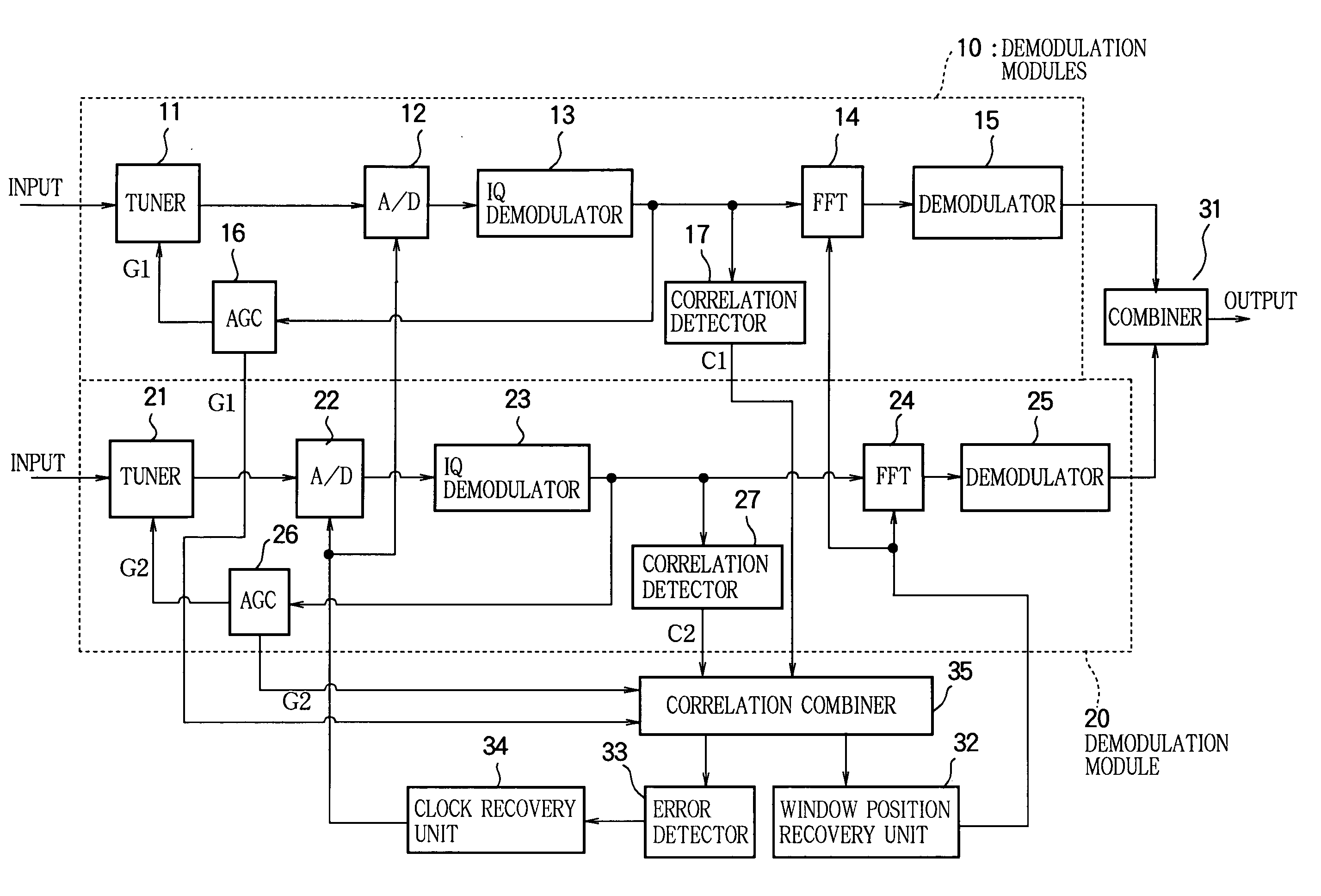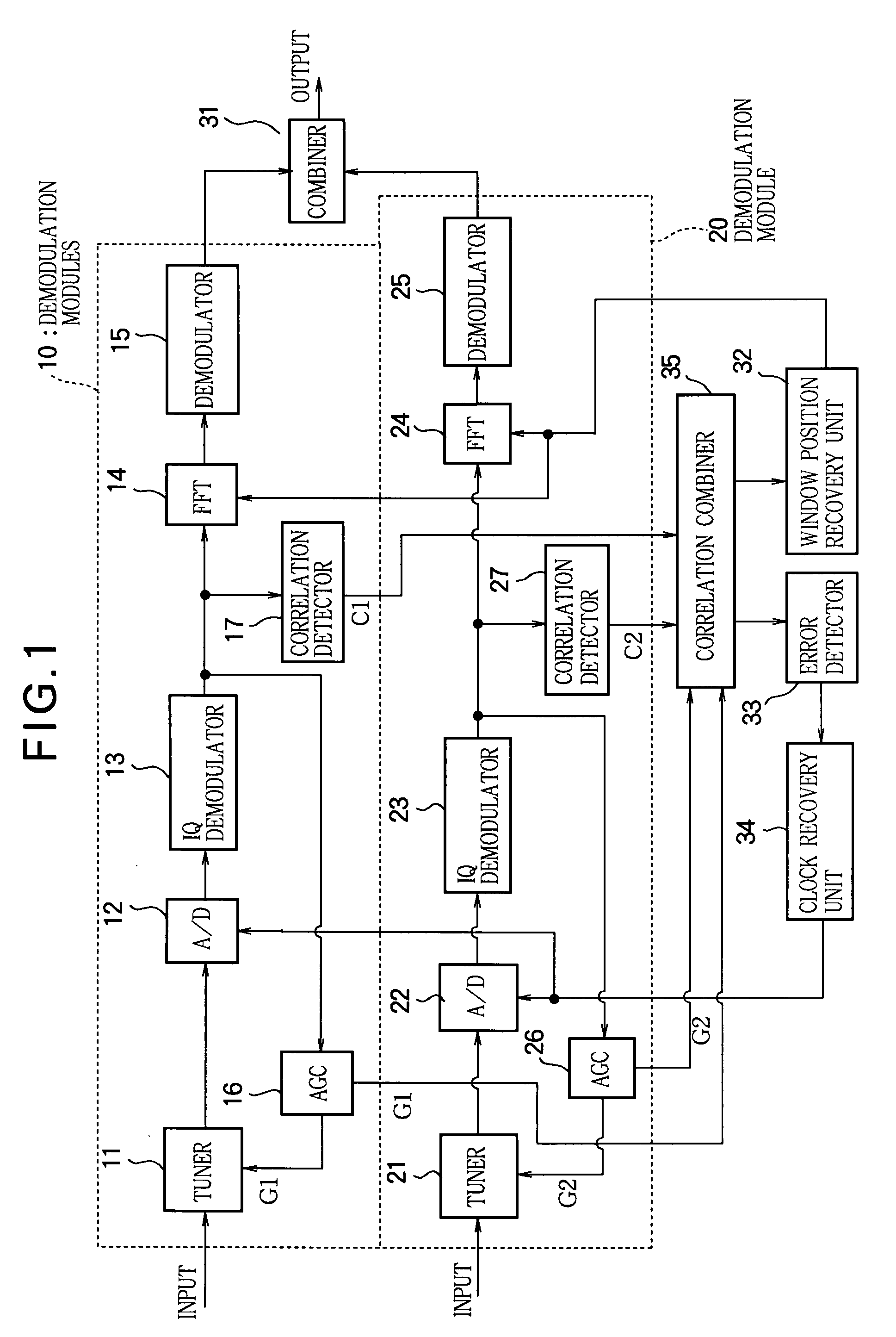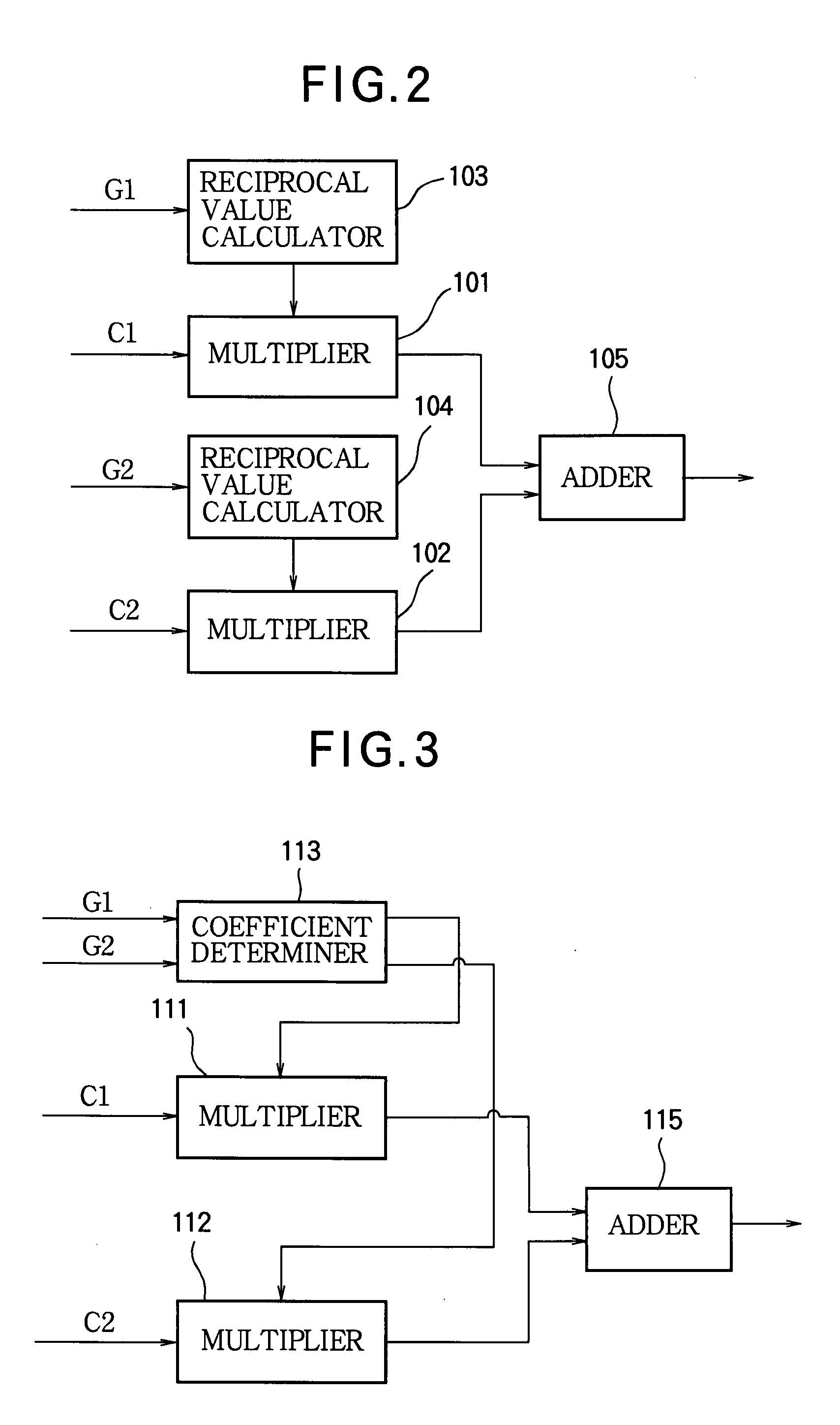Demodulator, Receiver, and Demodulation Method
a receiver and demodulator technology, applied in the field of demodulators, receivers, and demodulation methods, can solve the problems of other modules affecting the demodulation performance and the demodulation performance suffers, and achieve the effect of accurate and fast fourier transform window position recovery
- Summary
- Abstract
- Description
- Claims
- Application Information
AI Technical Summary
Benefits of technology
Problems solved by technology
Method used
Image
Examples
first embodiment
[0019]FIG. 1 is a block diagram showing the structure of a demodulator in a first embodiment of this invention, which is configured for diversity reception with two demodulation modules (a first demodulation module and a second demodulation module) 10, 20. The received signals are input in parallel to the tuners 11, 21 in the demodulation modules 10, 20. The input signals are converted by the tuners 11, 21 to the intermediate frequency band or IF band, then supplied to A / D converters 12, 22. The A / D converters 12, 22 generate output signals in synchronization with a clock signal supplied from a clock recovery unit 34, described below; they convert the outputs of the tuners 11, 21 to digital signals and supply the resulting values to IQ demodulators 13, 23. The input data are converted in the IQ demodulators 13, 23 to complex-valued baseband signals which are supplied to fast Fourier transform (FFT) units 14, 24. Operating according to a window position signal from an FFT window posi...
second embodiment
[0042]FIG. 5 is a block diagram showing the structure of a demodulator in a second embodiment of this invention, which is configured for diversity reception with two demodulation modules 10, 20 as in the first embodiment.
[0043]The structure of the demodulator shown in FIG. 5 is generally similar to the structure shown in FIG. 1, but is equipped with C / N detectors 18, 28 for detecting a C / N value (signal power vs. error signal power ratio) which is the power ratio between the signal actually demodulated and the error of the actually demodulated signal with respect to the originally expected demodulated signal in each module. The C / N values F1, F2 calculated in the C / N detectors 18, 28 are supplied to a correlation combiner 36 together with the correlation waveforms C1, C2 detected by the correlation detectors 17, 27.
[0044]The correlation combiner 36 calculates values proportional to the C / N values F1, F2 supplied from the C / N detectors 18, 28 in each module, multiplies the correlatio...
third embodiment
[0058]FIG. 9 is a block diagram showing the structure of a demodulator in a third embodiment of this invention, which is configured for diversity reception with two demodulation modules 10, 20 as in the first and second embodiments.
[0059]The structure of the demodulator shown in FIG. 9 is generally similar to the structures shown in FIGS. 1 and 5, but is equipped with synchronization acquisition decision units 19, 29, on the assumption that the transmitted OFDM signal includes a known synchronization signal. The synchronization acquisition decision units 19, 29 determine whether acquisition of synchronization with the OFDM signal has succeeded or not by determining whether the known synchronization signal can be correctly demodulated in each module or not, and output resulting synchronization acquisition decision values A1, A2. The correlation waveforms detected by the correlation detectors 17, 27 and the synchronization acquisition decision values output from the synchronization ac...
PUM
 Login to View More
Login to View More Abstract
Description
Claims
Application Information
 Login to View More
Login to View More - R&D
- Intellectual Property
- Life Sciences
- Materials
- Tech Scout
- Unparalleled Data Quality
- Higher Quality Content
- 60% Fewer Hallucinations
Browse by: Latest US Patents, China's latest patents, Technical Efficacy Thesaurus, Application Domain, Technology Topic, Popular Technical Reports.
© 2025 PatSnap. All rights reserved.Legal|Privacy policy|Modern Slavery Act Transparency Statement|Sitemap|About US| Contact US: help@patsnap.com



